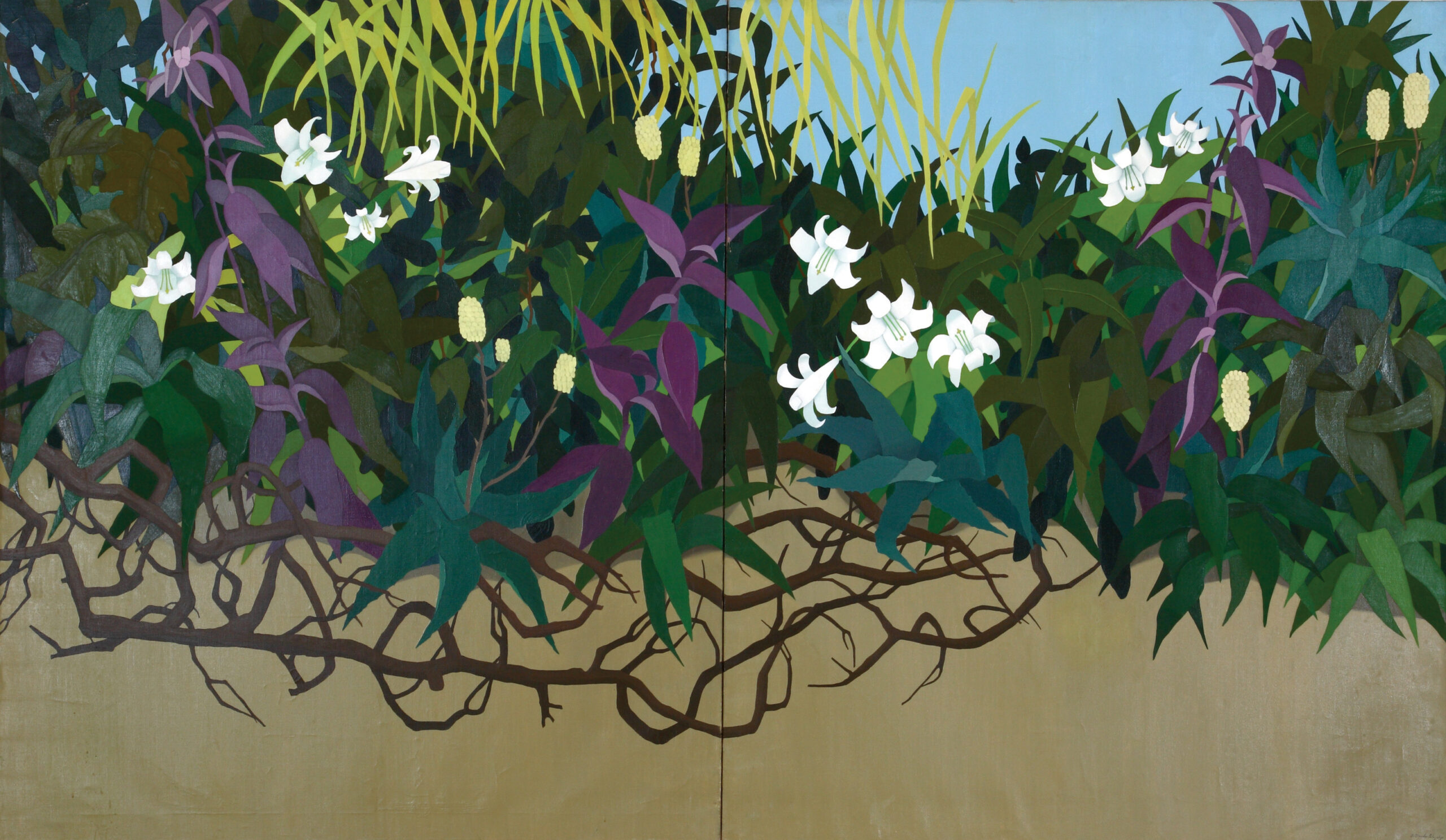
Looking back on the evolution of the Ukrainian feminist tradition, this exhibition honors the 100th anniversary of the Ukrainian National Women’s League of America (UNWLA) and the contributions of its members in the global arena of diplomacy. The title refers to Pershyi Vinok (First Wreath), the landmark 1887 feminist almanac uniting women from Ukrainian communities under Habsburg and Czarist rule. “The Duties of Ukrainian Women Beyond the Ocean” were then articulated in a speech written by UNWLA president Olena Lototsky for the 1934 International Congress of Ukrainian Women in Stanyslaviv.
Since 1925, the UNWLA has navigated waves of migration and historic disruptions, proving, in Dr. Martha Kichorowska Kebalo’s words, how “feminist sensibility can coexist with long-distance nationalism.” Many artists featured in the exhibition were published in the UNWLA’s Our Life magazine, while other artifacts come from the UNWLA’s 1930s collection that became the foundation for The Ukrainian Museum. Artworks by Halyna Mazepa and Lydia Bodnar-Balahutrak recall early humanitarian campaigns, including relief for Carpathian flood victims in 1927. Still lifes by Iryna Homotiuk-Zielyk and Chrystya Olenska evoke decades of UNWLA members’ Holodomor awareness work. Paintings by Olena Kulchytska, Alla Johansen, Sophie Zarycka, and Arcadia Olenska-Petryshyn are presented alongside archival correspondence with female dissidents and wives of political prisoners in Ukraine during the Soviet period, reflecting on the UNWLA’s efforts to build a transnational activist community. Historic documents recall the UNWLA’s representation at the United Nations Decade of Women’s World Conferences in Mexico City (1975) and Copenhagen (1980), where its members demonstrated, distributed information, and conducted panels in defense of women prisoners of conscience.
Artists Alina Tenser and Sasha Topolnytska represent the generation that arrived in the U.S. in the 1990s, when the UNWLA advised global aid agencies on post-Chornobyl Ukraine. Their work appears alongside Yaroslava Surmach-Mills’ illustrated children’s book, connected to the UNWLA’s involvement with the International Movement of Mothers and the organization’s advocacy for vulnerable children under the UN Convention on the Rights of the Child (1989). Following their Children of Chornobyl advocacy work in the 1990s, the UNWLA’s campaigns have focused on the return of Ukrainian children kidnapped by Russia since its full-scale invasion in 2022.

